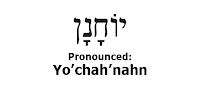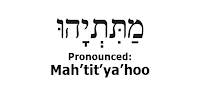The Letter Vav

Vav, one of the smallest letters of the Hebrew alphabet, is a mere vertical line. Slight as it is, however, it is a letter that has a powerful impact on the Hebrew language. Perhaps this is because vav represents the physical world that surrounds us. Metaphorically, vav represents the letter six and six represents six directions: forward, back, right, left, up and down.
Vav, however, is a letter of connection. As a prefix, vav is the connecting conjunction meaning either “and” or “or” depending on the context. In fact, the vav is translated in different places as a wide range of conjunctions, however "and/or" are the most common. Perhaps, this is why the literal meaning of the letter, vav, is hook.
In Biblical Hebrew, the vav, when used as the conjunction “and,” and attached to a verb, becomes a vav hahm’ha’pehchet, a vav that flips the tense of the verb. For instance, “yomar” means “he will say,” but “va’yomar” means “he said.” The vav hahm’ha’pehchet changes past to future and future to past. It has no effect on present tense verbs.
What is even more interesting about the vav hahm’ha’pehchet is that the vav is also one of the letters that form God’s name, and God, who is Omnipresent, represents eternity - He was, He is, He will be (hayah, hoveh, v’yee’yeh). Furthermore, only the present tense of the word “to be” contains a vav. The past and the future can be altered depending on perspective (think of those who “alter history”) but the present is what it is, unchangeable. This concept also represents the eternal nature of God: past, present and future are all God’s present state of being.
Bibliographical acknowledgment: The Wisdom In The Hebrew Alphabet: The Sacred Letters as a Guide to Jewish Deed and Thought. By Rabbi Michael L. Munk, Mesorah Publications, 1983.


Comments
Post a Comment